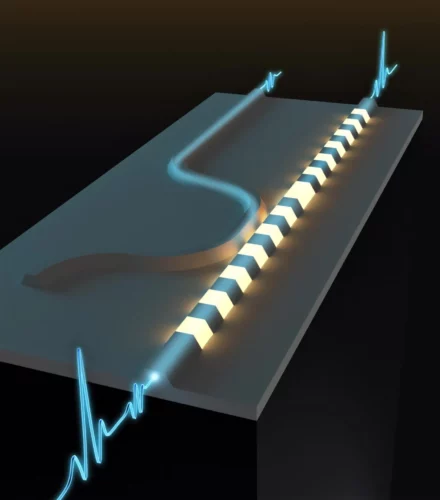Researchers at California Institute of Technology(CalTech) have developed using optical instead of electronic components.
Optical instruments like cables have enabled high speed internet. But the technology can be adapted in several ways, which is basically a type of communication. Replacing electronic components with optical instruments like in 5G optical cables, we can enable high speed signal processing for almost every electronic equipment.

Engineers at California Institute of Technology(CalTech) have developed a switch using optical instruments. Optical instruments use light pulses as signals. By doing so, the speed and power becomes highly efficient and can possibly revolutionize computation.
Engineers have designed a switch using the concept of optical nonlinearity. The ON/OFF property of the switch has been a foundation for transistors. But unlike electrons the photons do not go well in it. Hence the development of an optical switch became a challenge.
Engineers chose a crystalline material known as lithium niobate, a combination of niobium, lithium, and oxygen. The material has a non linear property due to the special arrangement of atoms that produces output not proportional to its input.
Using the advanced nanofabrication techniques, the engineers created lithium niobate-based integrated photonic devices that allow for the confinement of light in a tiny space. The smaller the space, the greater the intensity of light with the same amount of power. This resulted in stronger nonlinear response of the information carrying light pulses. They also confined the light temporarily, and the design kept the pulses short increasing the peak power of it.
The combined effect of these two tactics—the spatiotemporal confinement of light—is to substantially enhance the strength of nonlinearity for a given pulse energy, which means the photons now affect each other much more strongly. The technology enables switching at the speed of 50 femtoseconds (a femtosecond is a quadrillionth of a second). This development can aid efforts to achieve ultrafast all purpose signal processing and computing.






